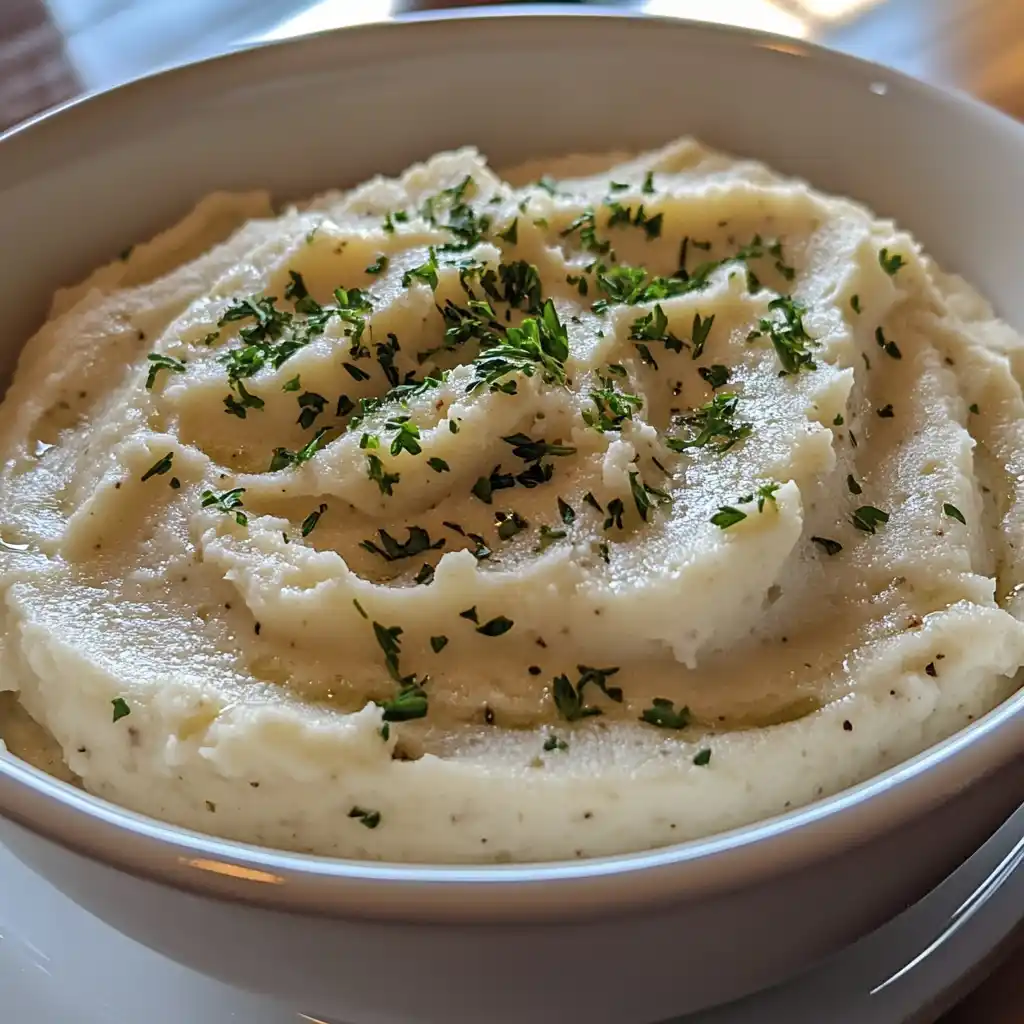Mashed cauliflower has quickly become a favorite for anyone looking to enjoy comfort food with a healthy twist. This simple, nutrient-rich dish offers a creamy texture and delicious flavor that makes it a smart substitute for traditional mashed potatoes. Whether you’re cutting carbs, following a keto lifestyle, or just exploring new ways to eat more veggies, mashed cauliflower fits right in with your goals.
In this article, we’ll break down exactly how to make it from scratch, explore tips for avoiding watery results, and compare it to the classic spud version. You’ll also find tasty variations, healthy add-ins, and tricks to bring out the best flavor every time.
Looking for inspiration? Try something new like this hearty, flavorful broccoli cheese casserole that’s also veggie-based and ultra-satisfying.
Table of Contents
What is Mashed Cauliflower?
– Origins and Rise in Popularity of Mashed Cauliflower
This creamy vegetable-based dish has become a popular choice for those seeking comfort food without the guilt. Originally popularized in health-conscious and low-carb circles, it began as a creative alternative to mashed potatoes and quickly gained mainstream attention. Its rise came alongside the broader trend of using cauliflower in place of higher-carb ingredients—from pizza crusts to rice alternatives.
Its appeal lies in both its versatility and its simplicity. Cauliflower has a mild flavor that easily takes on seasonings and mix-ins, making it perfect for transforming into a smooth, savory mash. As interest in keto, gluten-free, and plant-forward diets continues to grow, so has the demand for tasty, vegetable-based side dishes like this one.
– Key Differences Between Mashed Cauliflower and Mashed Potatoes
At a glance, these two dishes may look alike, but they differ in some important ways. Potatoes are much higher in starch and calories, which can impact blood sugar levels and overall carb intake—especially for those on low-carb or diabetic-friendly diets. In contrast, cauliflower offers a lighter option that’s lower in both calories and carbohydrates.
Texture also sets them apart. While traditional mashed potatoes are dense and heavy, a well-prepared cauliflower version is typically softer and more airy. The taste is milder and slightly nutty, though it blends well with garlic, butter, or even a touch of cheese for extra flavor. It might not be an identical swap in terms of taste, but it’s certainly a satisfying one.
Print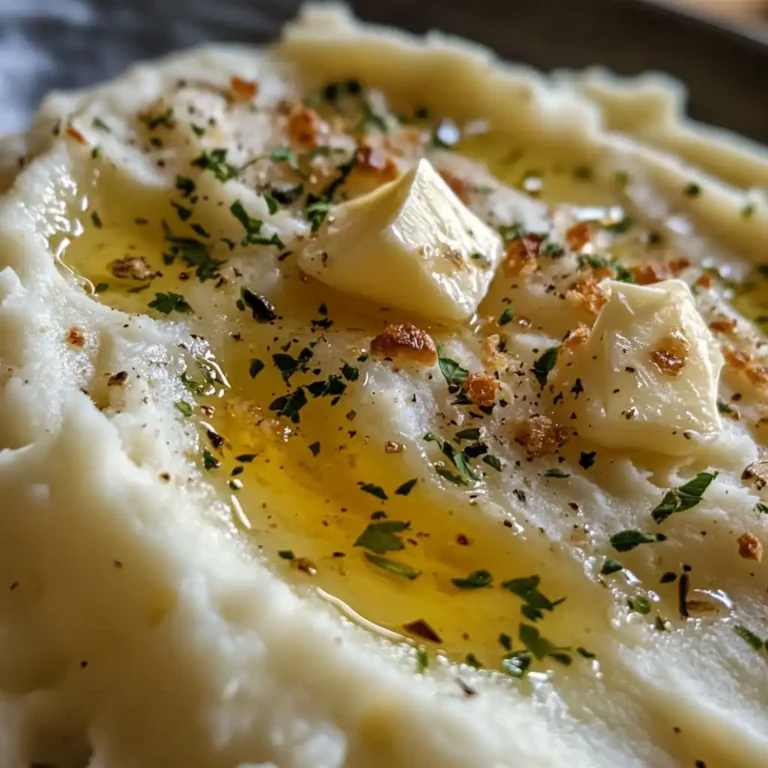
Mashed Cauliflower
Mashed cauliflower is a creamy, low-carb side dish that’s a smart and satisfying alternative to mashed potatoes—perfect for keto, gluten-free, and veggie-forward meals.
- Total Time: 22 minutes
- Yield: 4 servings
Ingredients
-
1 medium head cauliflower, cut into florets
-
2 cloves garlic (optional)
-
2 tablespoons unsalted butter or olive oil
-
Salt and black pepper to taste
-
2 tablespoons cream cheese or heavy cream (optional)
-
Optional toppings: grated Parmesan, chopped chives, or nutritional yeast
Instructions
-
Wash and chop cauliflower into even-sized florets.
-
Steam cauliflower (and garlic, if using) until fork-tender, about 10–12 minutes.
-
Drain well and let sit in a colander or on a clean towel to release excess moisture.
-
Transfer to a food processor or blender. Add butter, cream cheese (if using), salt, and pepper.
-
Blend until smooth, pausing to scrape down sides as needed.
-
Taste and adjust seasoning. Add optional toppings or mix-ins and pulse to combine.
-
Serve hot with fresh herbs or your favorite main dish.
Notes
For a richer flavor, roast the cauliflower and garlic instead of steaming. Drain well to avoid watery mash. Add grated cheese, herbs, or spices to customize.
- Prep Time: 10 minutes
- Cook Time: 12 minutes
- Category: Side Dish
- Method: Steamed
- Cuisine: American
Health Benefits of Mashed Cauliflower
– Why Mashed Cauliflower is a Great Low-Carb Option
When it comes to eating smart, this veggie-based side dish delivers big benefits in a small package. Compared to traditional mashed potatoes, it contains far fewer carbohydrates and calories—making it a favorite among those following low-carb, keto, or diabetic-friendly meal plans. A one-cup serving typically has around 25 calories and just 5 grams of carbs, while the same portion of mashed potatoes can top 200 calories and 30+ grams of carbs.
Thanks to its low glycemic index, cauliflower helps prevent the blood sugar spikes often associated with starchy foods. That makes it a great option not only for weight loss but also for maintaining steady energy levels. It’s especially popular among people looking for satisfying alternatives that don’t derail their nutrition goals.
Mashed cauliflower also happens to be incredibly filling due to its fiber content—meaning you’ll feel full longer without overeating. When prepared with olive oil, garlic, or a touch of cheese, it becomes a flavorful side that feels indulgent without the guilt.
– Nutritional Value: Calories, Vitamins, and Fiber Comparison
Let’s break down the nutrition in a typical serving. Cauliflower is rich in vitamins C and K, as well as folate, and it provides a healthy dose of fiber. It’s also a great source of antioxidants, which help protect your cells from inflammation and oxidative stress. Here’s how it compares nutritionally to mashed potatoes:
| Nutrient (1 cup) | Cauliflower (mashed) | Potatoes (mashed) |
|---|---|---|
| Calories | ~25 | ~210 |
| Carbohydrates (g) | ~5 | ~35 |
| Fiber (g) | ~2 | ~2 |
| Vitamin C (% Daily Value) | ~77% | ~20% |
| Glycemic Index | Low | High |
In short, you’re getting a nutrient-dense vegetable that offers more than just a calorie cut. Mashed cauliflower supports immunity, digestion, and heart health—all while fitting easily into a wide variety of dietary needs.
Don’t miss our high-protein egg salad sandwich if you’re looking for other low-carb meals packed with nutrients and flavor.
How to Make Mashed Cauliflower (Step-by-Step Guide)
– Ingredients You’ll Need for the Perfect Mash
Creating a creamy and flavorful cauliflower mash starts with just a handful of wholesome ingredients. The great thing is, you probably already have most of them in your kitchen. Here’s what you’ll need for a basic version:
- 1 medium head of cauliflower (or 4 cups of florets)
- 1–2 cloves of garlic (optional, but highly recommended)
- 2 tablespoons unsalted butter or olive oil
- Salt and pepper to taste
- 2 tablespoons cream cheese or heavy cream (optional, for extra creaminess)
Optional add-ins for extra flavor:
- Grated Parmesan
- Chopped fresh herbs (chives, parsley, thyme)
- Nutritional yeast for a dairy-free cheesy flavor
– Preparation: Boiling, Steaming, or Roasting?
How you cook your cauliflower makes a huge difference in both texture and flavor. Here’s a quick breakdown of your options:
| Cooking Method | Texture Outcome | Flavor Boost |
|---|---|---|
| Boiling | Soft, quick to blend | Neutral |
| Steaming | Light, prevents sogginess | Clean taste |
| Roasting | Drier texture, more flavor | Nutty & rich |
Steaming is often preferred because it keeps the cauliflower from absorbing too much water—helping you avoid a watery mash. Roasting, meanwhile, adds a deeper flavor that pairs beautifully with garlic and cheese.
– Step-by-Step Cooking Instructions
- Cut the cauliflower into even florets and rinse well.
- Steam or boil until tender (about 10–12 minutes for steaming, 8–10 for boiling).
- Drain thoroughly and let the florets sit in a colander or towel to release extra moisture.
- Transfer to a food processor or blender, and add butter, garlic, cream, and seasonings.
- Blend until smooth, scraping down the sides as needed. Pulse for a chunkier texture.
- Taste and adjust—add more salt, pepper, or herbs to get the flavor just right.
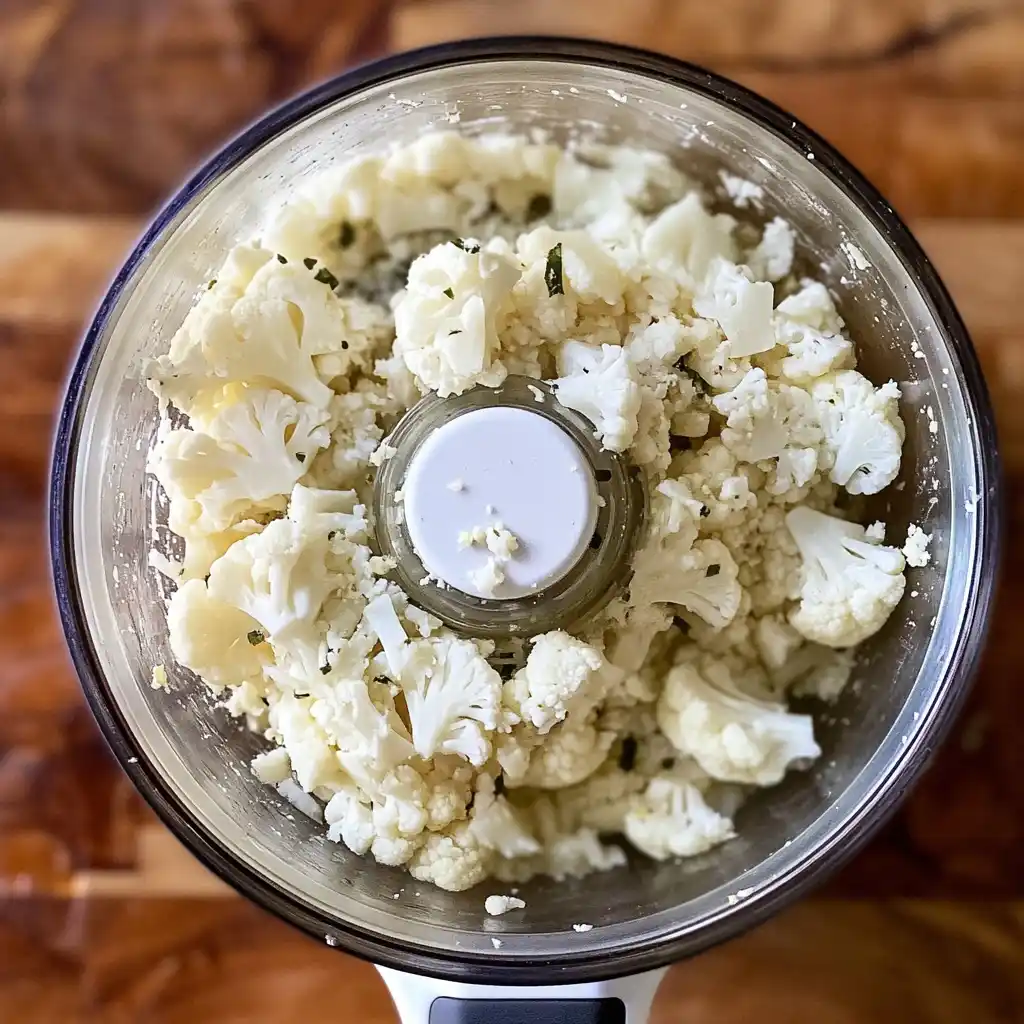
Flavor Boosters and Add-In Ideas
– Herbs, Spices, and Dairy Options to Enhance Taste
One of the best parts about mashed cauliflower is how well it takes on flavor. Unlike mashed potatoes, which can require a heavy hand with butter and cream, this lighter dish works beautifully with just a few simple additions. Whether you’re going for bold and savory or subtle and herby, there are endless ways to dress it up.
Popular mix-ins include roasted garlic, sharp cheese, fresh herbs, and a variety of spices. Here’s a quick guide to get creative with your bowl:
| Ingredient | Flavor Profile |
|---|---|
| Roasted garlic | Sweet, rich, and aromatic |
| Grated Parmesan or cheddar | Nutty, salty, sharp |
| Cream cheese or sour cream | Smooth, tangy, adds body |
| Chives or green onions | Bright, slightly spicy |
| Paprika or cayenne pepper | Smoky with a kick of heat |
You can also experiment with flavored butters or infused oils for extra complexity. The best part? Mashed cauliflower is a blank canvas—it adapts to whatever direction you want to take it.
– Vegan and Dairy-Free Alternatives for Creaminess
If you’re skipping dairy, you won’t miss out on texture or taste. There are plenty of ways to make mashed cauliflower ultra-creamy without using butter or cream.
Here are a few smart swaps:
- Olive oil: A heart-healthy fat that adds depth
- Coconut cream or almond milk: Smooth, neutral base options
- Cashew cream: Adds richness without overpowering flavor
- Nutritional yeast: Delivers that “cheesy” flavor in a vegan form
These options blend smoothly into your cauliflower, giving you that luscious texture everyone loves. For added flavor, use garlic, sea salt, or lemon zest to brighten things up.
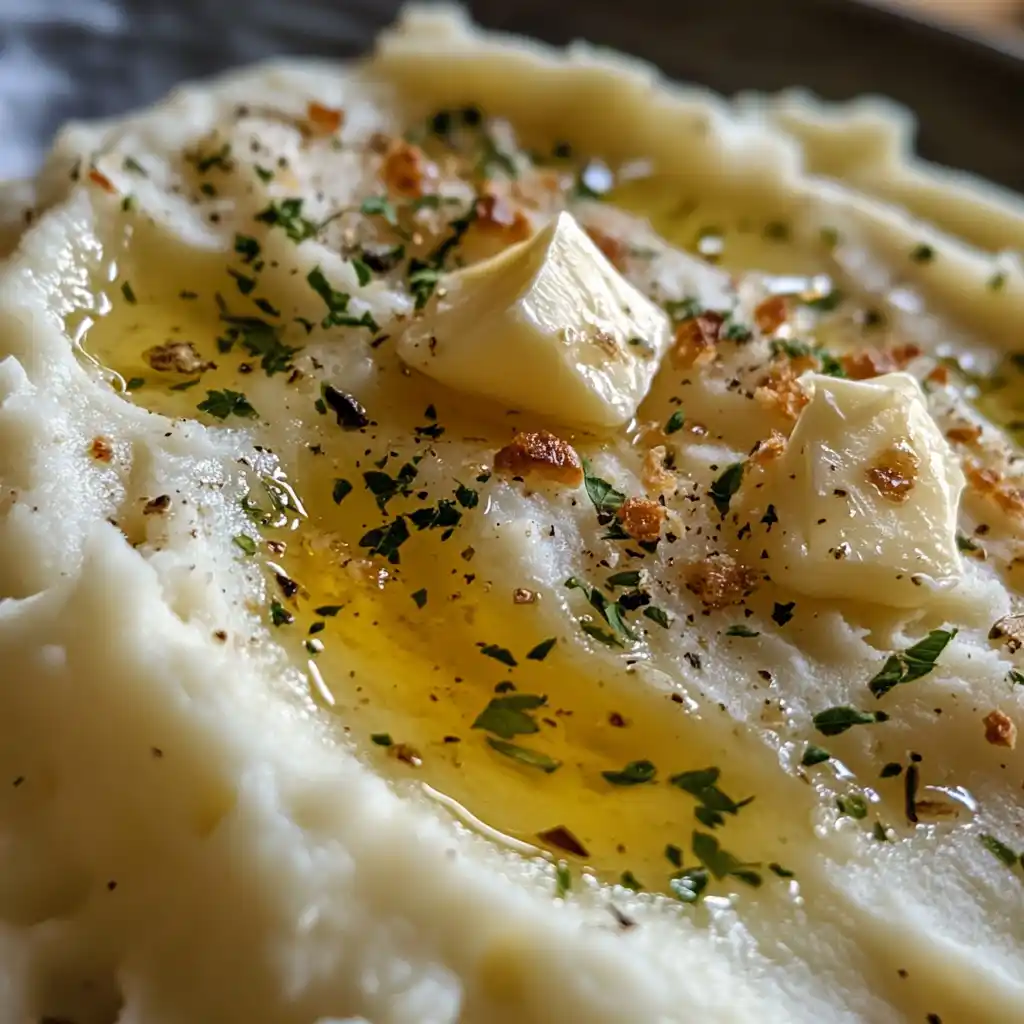
How to Prevent Watery Mashed Cauliflower
– Tips for Proper Draining and Cooking Techniques
One of the most common issues people face when making mashed cauliflower is excess water. Because cauliflower holds a lot of moisture, it’s easy to end up with a thin or soggy mash if you’re not careful. But don’t worry—there are easy ways to avoid this and create a creamy, spoonable consistency every time.
First, start with the right cooking method. Steaming is ideal because it softens the cauliflower without letting it absorb too much water. Boiling can work too, but you’ll need to be extra careful when draining.
Once cooked, drain thoroughly. Let the cauliflower sit in a colander for at least 5–10 minutes after steaming or boiling. For even better results, pat the florets dry with a clean towel or return them to the hot pan for a minute or two to evaporate leftover moisture.
You can also blend the mash in stages. Start with less liquid and only add more if needed. This gives you more control over the final texture.
– How to Thicken Runny Cauliflower Mash Naturally
Already made a batch that turned out too runny? No problem—there are a few easy ways to fix it.
Here are some effective thickening tricks:
- Reheat gently on the stove: Simmer the mash in a dry pan over low heat to evaporate excess moisture.
- Add cream cheese or grated Parmesan: These give body and richness without overwhelming the flavor.
- Try instant potato flakes or mashed cooked cauliflower: These can be used in moderation to thicken the texture without affecting the taste too much.
- Use cauliflower rice: Stir in a spoonful of cooked, dry cauliflower rice for a quick rescue.
Just remember: the key to perfect mashed cauliflower is moisture control from the beginning. A little prep goes a long way in getting that restaurant-quality finish at home.
Texture & Taste: Does It Really Replace Mashed Potatoes?
– Texture Comparison: Cauliflower vs. Potato Mash
One of the biggest questions people ask about mashed cauliflower is whether it can truly stand in for mashed potatoes. The answer? It depends on what you’re looking for—but it comes surprisingly close.
Cauliflower has a much lower starch content than potatoes, which gives it a lighter, silkier texture when blended. While mashed potatoes tend to be thick and fluffy, cauliflower mash is typically smoother and creamier, especially when steamed and processed properly. If you’re aiming for that “stick-to-your-ribs” texture, adding ingredients like cream cheese or grated cheese can help mimic that density.
You’ll also notice less gumminess with cauliflower, which makes it a perfect pairing for rich mains like pot roast, grilled chicken, or even holiday turkey. When you drain and blend it right, the texture is satisfyingly smooth—without being watery or overly soft.
– Taste Test: Can You Fool Your Family?
When seasoned well, mashed cauliflower can be incredibly close in taste to mashed potatoes. The flavor is milder and slightly nuttier, but it picks up surrounding flavors like garlic, herbs, butter, and cheese beautifully. In blind taste tests, many people can’t even tell the difference—especially when paired with savory sauces or gravies.
Of course, if you’re expecting the exact flavor of buttery Yukon Gold potatoes, you’ll notice a slight difference. But for most eaters, the swap is well worth it for the health benefits and lower carb load.
Pro tip: roast your cauliflower instead of boiling or steaming it to bring out a deeper flavor that enhances its richness. Add garlic, salt, pepper, and a splash of cream, and you’ve got a bowl of mashed cauliflower that’s hard to resist—even for the skeptics at the table.
Delicious Serving Ideas and Recipe Variations
– Classic Garlic Parmesan Mashed Cauliflower
If you’re just getting started, you can’t go wrong with a classic garlic Parmesan version. It’s rich, savory, and loaded with flavor while still being low in carbs. This variation brings together steamed cauliflower, roasted garlic, grated Parmesan, a touch of butter, and cream for a dish that feels indulgent but fits perfectly into a healthy eating plan.
Here’s a quick flavor-packed combo:
- 1 head of cauliflower (steamed or roasted)
- 2 cloves of roasted garlic
- 2 tablespoons butter
- 1/4 cup grated Parmesan
- Salt and pepper to taste
– Spicy, Cheesy, and Loaded Cauliflower Mash Twists
Want to turn things up? Add a spicy or cheesy twist to your mashed cauliflower. For a loaded version, stir in sharp cheddar, sour cream, crumbled bacon, and sliced green onions. You can also add chopped jalapeños or a pinch of cayenne pepper for some kick.
Here are some ideas:
| Variation | Ingredients |
|---|---|
| Loaded “Baked” Style | Cheddar, sour cream, bacon, green onions |
| Tex-Mex Mash | Cumin, chili powder, shredded Monterey Jack |
| Spicy Garlic Herb | Crushed red pepper, roasted garlic, thyme |
| Italian-Inspired | Mozzarella, pesto, sun-dried tomatoes |
These creative takes make mashed cauliflower feel anything but basic. Plus, they’re perfect for potlucks, meal prep, or weeknight dinners where you want something comforting and crave-worthy.
– Make-Ahead and Freezer-Friendly Variations
Mashed cauliflower is not just versatile—it’s incredibly convenient. You can make it ahead and store it in the fridge for up to 4 days. Just reheat on the stovetop with a splash of milk or broth and stir until smooth again.
Want to freeze it? Let it cool completely, portion it into airtight containers, and freeze for up to a month. To reheat, thaw overnight in the fridge and warm gently on low heat, stirring frequently. It may lose a bit of its original texture, but a quick blend and seasoning adjustment will bring it right back.
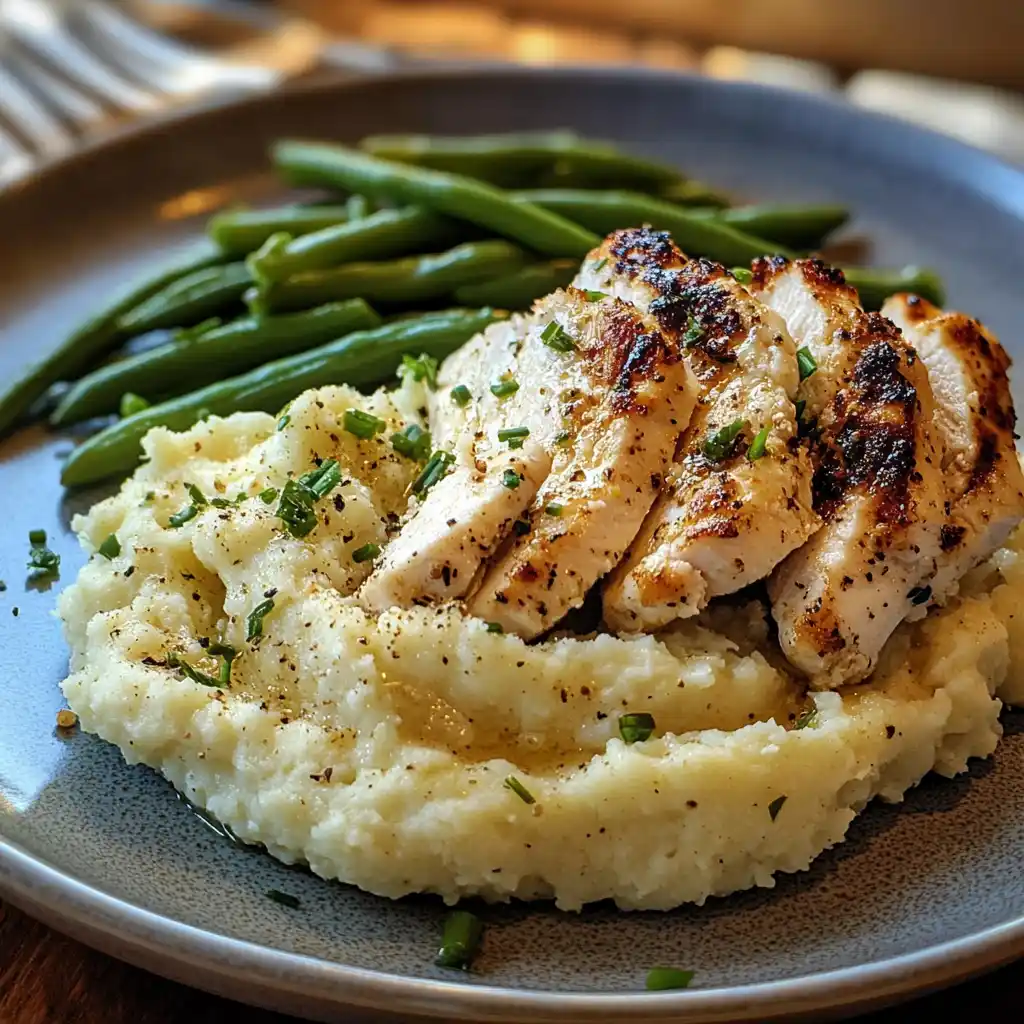
Craving variety? Discover great ideas like this chicken stir fry that pairs perfectly with a light, creamy veggie mash.
Common Mistakes to Avoid When Making Mashed Cauliflower
– Overcooking and Overseasoning
Even though mashed cauliflower is relatively easy to make, a few missteps can lead to disappointing results. One of the biggest culprits is overcooking the florets. When cauliflower is cooked too long, it becomes waterlogged and mushy—making it much harder to get that smooth, creamy texture without turning it into a soupy mess.
The fix? Steam the florets just until fork-tender—no longer. If you’re boiling, monitor closely and drain thoroughly. Another common issue is overseasoning. Because cauliflower has a mild flavor, it’s easy to overpower it with too much garlic, cheese, or salt. Start with a light hand, taste as you go, and adjust gradually to preserve balance.
– The Right Blending Tools for a Creamy Texture
Achieving a velvety consistency comes down to how you blend. A food processor usually gives the smoothest results, but even a high-powered blender or immersion blender will work well if used properly. Avoid using a traditional hand masher—it doesn’t break down the cauliflower fibers enough and often leaves a grainy texture.
Another mistake is adding all your liquids at once. Always blend the cauliflower first, then slowly add butter, cream, or broth in stages. This gives you full control over the final thickness and helps prevent a runny mash.
Here’s a simple checklist to avoid texture fails:
- ✅ Drain well after cooking
- ✅ Don’t skip the resting period (let steam escape)
- ✅ Use a food processor or blender for smooth results
- ✅ Add liquids gradually
- ✅ Blend in pulses for better control
When done right, mashed cauliflower turns out creamy, fluffy, and full of flavor—without all the starch of traditional mashed potatoes.
FAQs About Mashed Cauliflower
– How do I make cauliflower mash?
– Is mashed cauliflower healthy?
– How do you keep mashed cauliflower from being watery?
– Does mashed cauliflower taste the same as mashed potatoes?
Conclusion
Mashed cauliflower isn’t just a trendy alternative—it’s a smart, versatile, and flavorful side dish that belongs in every kitchen. With its creamy texture, subtle taste, and ability to absorb a wide range of seasonings, it’s no wonder this veggie mash has earned its place next to the classics. Whether you’re managing carbs, avoiding gluten, or simply looking to add more vegetables to your plate, this dish delivers on both nutrition and satisfaction.
From classic garlic-Parmesan mash to loaded, spicy, or vegan-friendly twists, the possibilities are endless. Just remember: the secret to success lies in proper cooking, thorough draining, and smart blending. Once you master the basics, you’ll have a reliable go-to dish that’s perfect for weeknight dinners, special occasions, and everything in between.
Looking for more wholesome dishes? Check out this twist on Moroccan lamb meatballs for a bold, satisfying main that complements any healthy side.

